Off-limits for 150 years, our largest waterfall will soon be just steps away
Ken Pirie, April 16 2014
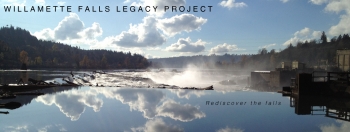 For the past year, I’ve been the project manager for the Walker Macy consultant team on the Willamette Falls Legacy Project. This has easily been the most rewarding project of my career.
For the past year, I’ve been the project manager for the Walker Macy consultant team on the Willamette Falls Legacy Project. This has easily been the most rewarding project of my career.
Why is this project so meaningful to me, my team, and our many incredibly committed public partners? Because of what it represents for our region and state: for the first time in 150 years, Oregonians will have the opportunity to rediscover the cultural and scenic treasure that is Willamette Falls.
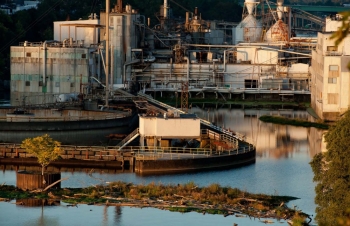 We believe the project site, the 22-acre former Blue Heron paper mill in Oregon City, could someday serve as an economic engine, a waterfront destination, a unique habitat, a window into Oregon’s past – and a bold step into our future.
We believe the project site, the 22-acre former Blue Heron paper mill in Oregon City, could someday serve as an economic engine, a waterfront destination, a unique habitat, a window into Oregon’s past – and a bold step into our future.
Located right next to Willamette Falls (the largest waterfall in the Pacific Northwest), this site was an important cultural and gathering place for Native American tribes long before it was a paper mill. The Oregon Trail literally ended here, with migrants collecting their land claims within sight of the roaring falls. And throughout the 1800s, the Falls made history by generating energy for Oregon’s early industries and cities and fueling the nation’s first long-distance electrical power transmission, including the power that lit the 1903 Lewis and Clark Centennial Exposition.
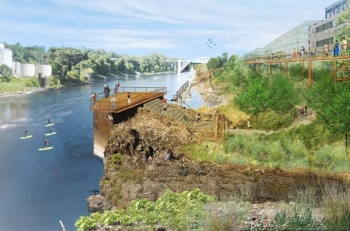 The former mill is for sale, but the site’s complexity and risks have required a careful and methodical transition to new uses. With the help of our consulting team, Oregon City, Clackamas County, Metro, the State of Oregon, and the property’s bankruptcy trustee, we have been working closely over the past year to develop a vision and master plan for the site.
The former mill is for sale, but the site’s complexity and risks have required a careful and methodical transition to new uses. With the help of our consulting team, Oregon City, Clackamas County, Metro, the State of Oregon, and the property’s bankruptcy trustee, we have been working closely over the past year to develop a vision and master plan for the site.
By rezoning and providing certainty for investors, the master plan framework defines how the area can be transformed – for economic redevelopment, healthy habitats, and historical and cultural interpretation. Throughout this year-long process, we have also taken great care to make sure the plan serves to reconnect all of you with Willamette Falls – first and most importantly, by providing for public access along the waterfront.
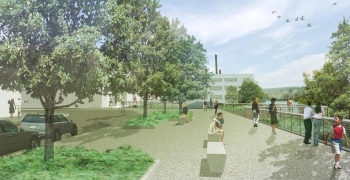 The Riverwalk we've proposed in the master plan would be a catalyst for economic development in Oregon City, and also enhance the site's development value by demonstrating the public’s commitment to improvements. It would attract visitors and generate momentum for continued implementation of the master plan.
The Riverwalk we've proposed in the master plan would be a catalyst for economic development in Oregon City, and also enhance the site's development value by demonstrating the public’s commitment to improvements. It would attract visitors and generate momentum for continued implementation of the master plan.
And last but not least, the Riverwalk would also be an important link in The Intertwine, connecting downtown Oregon City via a rail-trail with Metro’s Canemah Bluffs Natural Area, which is also undergoing ecological restoration and public access improvements. The project's partners recently agreed to seek sources of funding to design the Riverwalk – so visible change will soon be coming to this place.
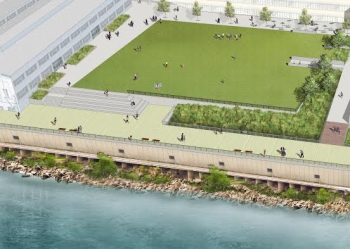 You can help shape that change, by joining our next public open house for the Vision and Master Plan on April 21st. Oregon City staff will be there to discuss the proposed plan, answer questions, and hear public feedback. This is a casual opportunity to see what’s new with the project and learn about next steps. If you are unable to attend, please visit the project’s website, where you can find a great deal of project information, and sign up for public tours.
You can help shape that change, by joining our next public open house for the Vision and Master Plan on April 21st. Oregon City staff will be there to discuss the proposed plan, answer questions, and hear public feedback. This is a casual opportunity to see what’s new with the project and learn about next steps. If you are unable to attend, please visit the project’s website, where you can find a great deal of project information, and sign up for public tours.
Through my work over the past year, I've been privileged to spend countless hours exploring the waterfront by Willamette Falls, a place that's been accessible to very few people over the past century and a half.
But soon, you, like me, will have the opportunity to rediscover Willamette Falls. Believe me — it’s unforgettable.

 Ken Pirie is a senior associate with
Ken Pirie is a senior associate with
Add new comment